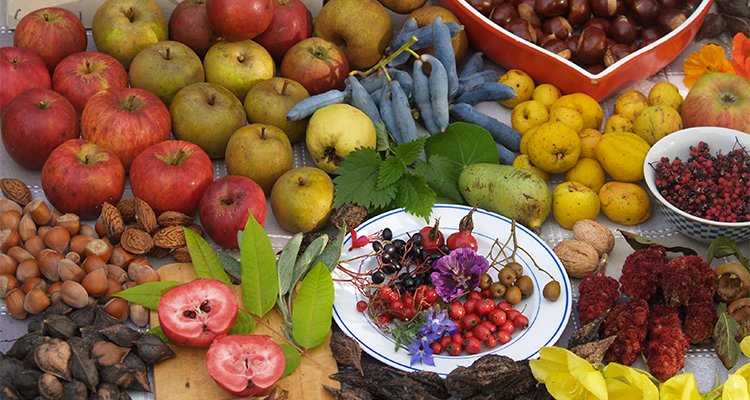
Impact story
Food forests; a sustainable option for agriculture
Within a couple of years, hundreds of food forests have been planted in the Netherlands. They produce food and at the same time contribute to many different ecosystem services. To what extent do food forests contribute to major agricultural issues, such as climate change, the nitrogen problem, biodiversity restauration, as well as water retention and buffering? And is there a revenue model for the farmer? WUR contributes by working on these fundamental questions about the value of food forests.
Agroforestry vs food forestry
The government is convinced of the advantages: the ambition is to have realized 25,000 hectares of agroforestry of which a 1,000 hectares of food forests in the Netherlands by 2030. Farmers mostly grow annual crops. Agroforestry combines annual crops or, for example, keeping cattle with perennials. This is done by, for example, planting rows of trees between fields of grain. The trees have positive effects on the annual crops because they provide shade, wind protection and root deeper. That helps limiting evaporation during droughts and drainage in events of heavy rainfall besides also storing CO2. Food forestry takes it a step further. These multi-layered perennial systems mimic a forest ecosystem, growing many different species that produce edible fruits, nuts, leaves, roots, herbs and seeds. Manure and pesticides are not needed, and it has a potential to restore soil while providing some food security through diversity of harvestable products all year round.
Food forests are a new phenomenon in the Netherlands: the most well-known food forest in Groesbeek was only planted in 2009. Meanwhile, hundreds of small initiatives, initiated by enthusiasts, have started. Slowly on also lager scale commercial food forest of 5 hectares and more are starting off. The Dutch association of food forests includes all current locations on a map (Dutch).
Challenging alternative for farmers
The government’s aim is ambitious but promising, because it is linked to the objective of planting more forests in the Netherlands. As space is scarce in the Netherlands, land with a current agricultural use is also part of the search area. To meet the ambitions by planting trees on arable land, farmers will have to be seduced to integrate trees in their agricultural system. In a food forest, the most complex agroforestry system, the earning model is possibly most challenging. Return on investments will take (a lot) more time compared to annual crop agricultural systems. Although a food forest will in time produce in abundance, it will approximately take up to 10 years before a food forest starts producing serious volumes. However, at the same time there is no need for crop protection products and (chemical) fertilizer and no seasonal preparing the soil with heavy machinery for ploughing and sowing. As part of the research concerning food forests students developed a calculation tool (Dutch) in which farmers and banks can enter factors such as investments, costs, picking performance and yields per plant. Other possible forms of yield, such as the contribution to biodiversity and education are also part of the tool. That is how a bridge is created between the knowledge and the actual application.
Challenges
What's more, harvesting in food forests is done by hand and often with volunteers. The food forests in Almere and Schijndel were developed with a research ambition in mind. The planting scheme was designed as such that future small machine harvesting is possible. Developing these machines is one of the fields of research right now. Since many of the food forests are still in the build-up phase, it is also necessary to consider foraging damage and other problems that come with this early stage. WUR students have developed several proposals for this, some already applied in practice, in an Academic Consultancy Training assignment Food for thought.Another challenge is the danger of introducing invasive species. In WUR research (Dutch) it is recommended to use a negatives list. In conclusion, there are still plenty of challenges and questions, but also huge potential.
Food forests have a potentially important role to play in making the overall agricultural system more robust. It deserves a place alongside other forms of sustainable agriculture. This project teaches us to what level food forests can contribute to food production, biodiversity, climate mitigation (carbon sequestration) and climate adaptation (adapting to the effects of climate change). WUR is an important partner for fundamental and applied research on food forests. Together with research partners, WUR contributes to the development of successful food forests that provide their own pest control, build fertility, produce food, and are climate robust.
Part of this article has previously appeared in TO2 magazine. Information has been added according to new developments within the research.